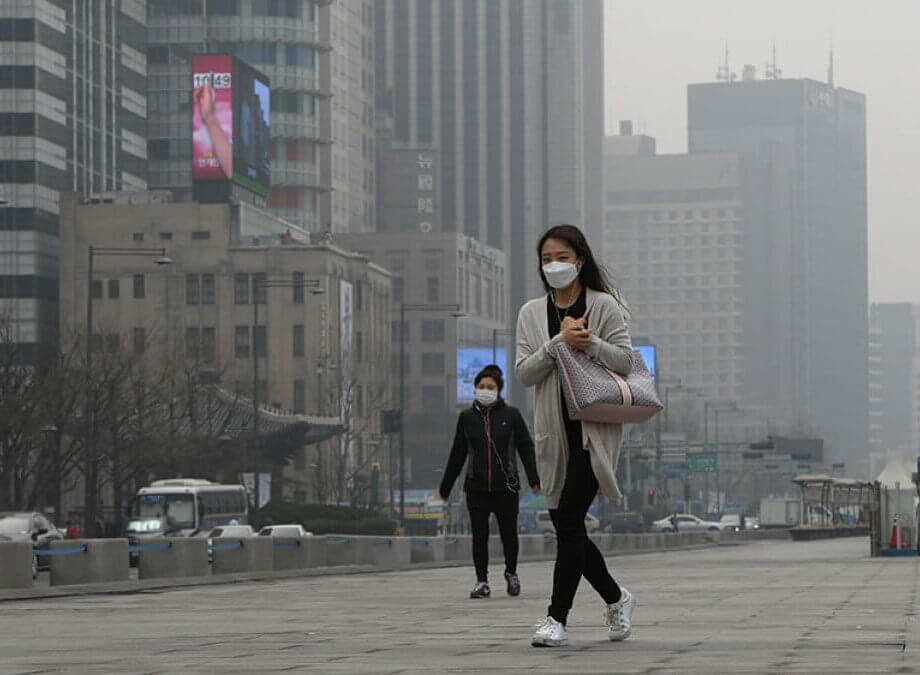Seoul’s Ozone Surge: A Growing Public Health Emergency
Seoul, South Korea’s bustling capital, is facing a mounting air quality crisis as ground-level ozone pollution surges to record highs. In 2024, the city issued 115 ozone advisories—a fourfold increase from the 29 alerts in 2019—prompting widespread health concerns and emergency warnings. This dramatic rise in ozone pollution is not only a local issue but reflects broader trends seen across East Asia and other rapidly urbanizing regions worldwide.
- Seoul’s Ozone Surge: A Growing Public Health Emergency
- What Is Ground-Level Ozone and How Does It Form?
- Why Are Ozone Levels Rising in Seoul?
- Health Impacts: Why Ozone Is More Dangerous Than You Think
- Why Is Ozone Pollution So Hard to Control?
- Policy Responses: What Is Seoul Doing to Tackle Ozone?
- How Does Ozone Pollution Affect Daily Life in Seoul?
- Broader Implications: Seoul as a Case Study for Urban Air Quality
- What Can Individuals Do to Protect Themselves?
- In Summary
While ozone high in the atmosphere protects life on Earth by blocking harmful ultraviolet radiation, at ground level it is a potent pollutant. The recent spike in Seoul’s ozone levels has outpaced even the city’s notorious fine dust (PM2.5) episodes, with experts warning that ozone may pose even greater health risks. Understanding the causes, health impacts, and policy challenges of this invisible threat is crucial for residents, policymakers, and anyone concerned about urban air quality.
What Is Ground-Level Ozone and How Does It Form?
Ozone (O3) is a molecule made up of three oxygen atoms. In the stratosphere, 10 to 50 kilometers above the Earth, ozone forms a protective layer that absorbs ultraviolet (UV) rays. However, at ground level—within the air we breathe—ozone is a harmful pollutant. It is not emitted directly, but forms through complex chemical reactions involving nitrogen oxides (NOx) and volatile organic compounds (VOCs) in the presence of sunlight.
Major sources of NOx include vehicle exhaust, power plants, and industrial activities. VOCs are released from fuel evaporation, industrial solvents, and even consumer products like cleaning agents and paints. When these precursors mix in the air and are exposed to strong sunlight, especially during hot, stagnant weather, ozone is produced in abundance. This process is known as photochemical smog formation.
Seoul’s dense traffic, industrial base, and high population density provide ample sources of NOx and VOCs. The city’s geography—surrounded by mountains and subject to frequent stagnant air masses—further exacerbates the problem by trapping pollutants and allowing ozone to accumulate.
Why Are Ozone Levels Rising in Seoul?
Despite efforts to reduce emissions of primary pollutants like NOx and particulate matter, ozone concentrations in Seoul and other Korean megacities have shown a persistent upward trend. Several interrelated factors are driving this increase:
- Climate Change and Heat Waves: Rising temperatures and more frequent heat waves, linked to global warming, create ideal conditions for ozone formation. Hotter, sunnier days accelerate the chemical reactions that produce ozone. Studies show that during heat waves in Seoul, ozone concentrations can increase by over 17%, with more than a third of heat wave days exceeding national ozone standards.
- Stagnant Air and Synoptic Weather Patterns: Weather plays a critical role in ozone episodes. Dry, hot, and stagnant air masses—classified as “dry tropical” in meteorological terms—have become more common in South Korea over the past 50 years. These conditions reduce pollutant dispersion and increase the efficiency of ozone production. Research indicates that a 300% increase in such weather patterns could lead to a 63% rise in high-ozone days.
- Changes in Emissions and Chemical Regimes: Paradoxically, reductions in NOx emissions (from cleaner vehicles and industrial controls) can sometimes lead to higher ozone levels in urban areas like Seoul. This is because ozone chemistry is “VOC-limited” in such environments: reducing NOx alone can decrease the destruction of ozone, while VOCs remain abundant. Effective ozone control thus requires simultaneous reductions in both NOx and VOCs.
- Transboundary and Background Ozone: Not all ozone in Seoul is locally produced. Regional background ozone—originating from natural sources, stratospheric intrusion, and pollution transported from China and other regions—sets a high baseline. Even if all anthropogenic emissions in South Korea were eliminated, models suggest that background ozone would keep levels above 56 parts per billion (ppb), close to or exceeding health-based standards.
Health Impacts: Why Ozone Is More Dangerous Than You Think
Ozone is a highly reactive gas that can cause immediate and long-term harm to human health. Unlike fine dust, which is visible and often the focus of public concern, ozone is invisible and odorless, making its dangers less obvious but no less severe.
Acute Health Effects
Short-term exposure to elevated ozone levels can cause:
- Coughing, sore throat, and chest discomfort
- Eye and nose irritation
- Difficulty breathing, especially during exercise or outdoor activities
- Worsening of asthma and other respiratory conditions
Children, the elderly, and people with pre-existing lung or heart diseases are particularly vulnerable. Even healthy adults may experience reduced lung function and increased susceptibility to respiratory infections during high-ozone episodes.
Long-Term Health Risks
Chronic exposure to ozone has been linked to:
- Development and aggravation of asthma
- Increased risk of chronic obstructive pulmonary disease (COPD)
- Higher rates of cardiovascular disease and premature death
- Potential impacts on brain health and cognitive function
Ozone’s strong oxidative properties can damage cells and tissues in the lungs, trigger inflammation, and even affect the cardiovascular and nervous systems. Recent studies have found associations between long-term ozone exposure and increased mortality from respiratory and cardiovascular causes, as well as higher rates of hospital admissions for asthma and other illnesses.
Why Is Ozone Pollution So Hard to Control?
Unlike primary pollutants, which can be directly regulated at their source, ozone is a “secondary” pollutant—formed in the atmosphere from precursor emissions. This makes it much harder to control, especially in large urban areas with diverse sources of NOx and VOCs.
Key challenges include:
- Nonlinear Chemistry: The relationship between ozone and its precursors is complex. In VOC-limited regimes like Seoul, reducing NOx alone can actually increase ozone. Effective control requires coordinated reductions in both NOx and VOCs, which come from a wide range of sources.
- Multiple Sources: VOCs are emitted not only from vehicles and industry but also from consumer products, solvents, and even natural vegetation. Some sources, like household chemicals and biogenic emissions, are difficult to regulate.
- Transboundary Pollution: Ozone and its precursors can travel long distances, crossing national borders. Pollution from China and other regions contributes to Seoul’s background ozone, limiting the effectiveness of local controls.
- Climate Feedbacks: As the climate warms, conditions for ozone formation improve, creating a feedback loop that makes future reductions even more challenging.
Policy Responses: What Is Seoul Doing to Tackle Ozone?
Recognizing the growing threat, the Seoul Metropolitan Government has ramped up its ozone mitigation efforts. Since April 2025, the city has conducted inspections at over 1,000 businesses—including gas stations, laundries, and car refinishing shops—that emit large amounts of VOCs. Policies are being developed to target both NOx and VOC emissions, with a focus on:
- Promoting cleaner vehicles and public transportation
- Encouraging the use of eco-friendly boilers and industrial equipment
- Regulating solvent use and fuel evaporation in businesses
- Expanding air quality monitoring and public advisories
At the national level, South Korea’s Special Act on Metropolitan Air Quality Improvement sets ambitious targets for reducing surface ozone, particularly in Seoul. However, experts caution that local efforts must be complemented by regional cooperation and global action on climate change to achieve lasting improvements.
How Does Ozone Pollution Affect Daily Life in Seoul?
For Seoul’s 10 million residents, ozone pollution is more than an abstract scientific issue—it has real impacts on daily life. On high-ozone days, health authorities issue advisories urging people, especially sensitive groups, to limit outdoor activities, close windows, and use air purifiers. Schools may cancel outdoor sports, and hospitals see an uptick in respiratory complaints.
Despite these warnings, many people remain unaware of the risks, as ozone is invisible and its effects can be delayed. Public education and real-time air quality information are essential tools for reducing exposure and protecting health.
Broader Implications: Seoul as a Case Study for Urban Air Quality
Seoul’s ozone crisis is not unique. Cities across Asia, North America, and Europe have struggled with rising ozone levels, even as other pollutants decline. The experience of Seoul highlights several key lessons for urban air quality management:
- Integrated Approach Needed: Controlling ozone requires coordinated action on multiple fronts—reducing both NOx and VOCs, addressing transboundary pollution, and adapting to changing climate conditions.
- Importance of Meteorology: Weather patterns and climate change play a critical role in air quality. Policymakers must consider these factors in designing effective interventions.
- Public Health Focus: Ozone’s health impacts are severe and widespread, affecting not just vulnerable groups but the entire population. Health-based standards and public advisories must be updated to reflect the latest science.
- Regional and Global Cooperation: Ozone pollution does not respect borders. International collaboration is essential to address transboundary sources and share best practices.
What Can Individuals Do to Protect Themselves?
While systemic solutions are needed to address the root causes of ozone pollution, individuals can take steps to reduce their exposure and protect their health:
- Monitor local air quality reports and heed ozone advisories
- Limit outdoor activities, especially exercise, during high-ozone periods (typically afternoons in summer)
- Keep windows closed and use air purifiers indoors
- Support policies and practices that reduce vehicle use and promote clean energy
- Use eco-friendly products and reduce solvent use at home
For those with respiratory or heart conditions, following medical advice and having a plan for high-pollution days is especially important.
In Summary
- Seoul is experiencing a sharp rise in ground-level ozone pollution, with advisories quadrupling in recent years.
- Ozone forms through chemical reactions involving NOx and VOCs in sunlight, with hot, stagnant weather and climate change accelerating its production.
- Health risks from ozone include respiratory and cardiovascular diseases, with both short-term and long-term effects.
- Controlling ozone is challenging due to its complex chemistry, multiple sources, and contributions from regional and global pollution.
- Seoul’s government is intensifying efforts to reduce VOC and NOx emissions, but broader regional and international cooperation is needed.
- Individuals can protect themselves by monitoring air quality, limiting outdoor exposure during high-ozone periods, and supporting clean air initiatives.












